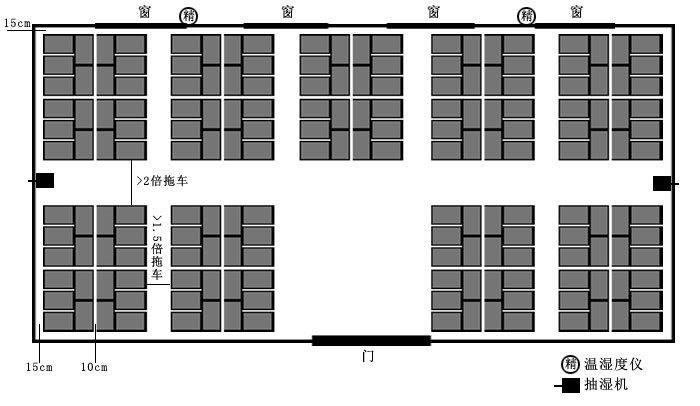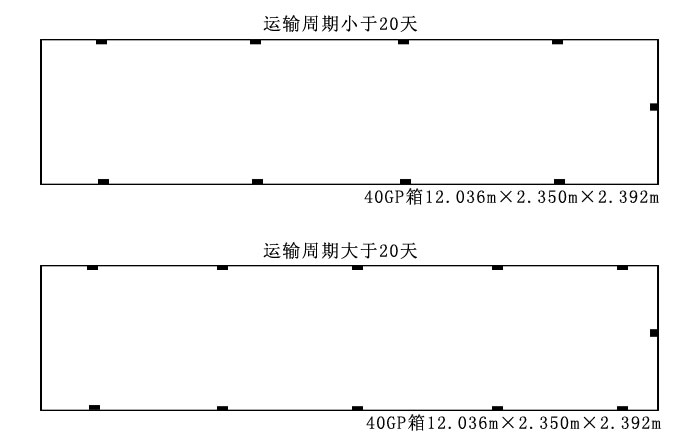According to the mold identification analysis of moldy samples by our company, four mold species were obtained: Mucor racemosa, Penicillium funiculata, Mucor elegance, and Penicillium griseus. These four species are common molds and have strong effects on fibers. decomposition ability. Our testing center will analyze the packaging and materials of your products. The materials used are conventional materials and are not high-risk moldy materials. However, the roughness of the textile fabric used makes it easy to deposit dust and mold spores. When encountering high temperature and high humidity conditions in storage and transportation environments, the deposited mold will multiply, grow and become infectious in large numbers. Our company recommends the following mildew prevention operations:
Product packaging
1.1 Existing stock packaging
For products in the warehouse that have not become moldy, a 2.5cm × 5cm anti-mold sheet and a 2g anti-mold antibacterial pack are placed in each box from September of the current year to February of the next year. Place a 2.5cm×5cm anti-mold sheet and two packs of 2g anti-mold and antibacterial packets. Effectively control the humidity and mold quantity in the box (generally this can be done during inspection). 21.2 For subsequent production packaging, a 2.5cm × 5cm anti-mold sheet and a 2g anti-mold and antibacterial package are placed in each packaging box. However, during the storage process, the temperature and humidity of the warehouse must be controlled to reduce the loss of anti-mold products. consumption. When inspecting the goods, it is best to replace it with an anti-mold sheet of the same specification. If the anti-mold and antibacterial package absorbs too much moisture, the desiccant needs to be replaced. Put an extra pack of anti-mold and antibacterial bags from February to September every year.
1.2 Handling and packaging of moldy products
The fibrous tissue of moldy products contains a large number of mold spores, which increases the risk of mold. In addition, water vapor is released during the growth of mold, so the interior of the color box is often wetter than the color boxes that are not moldy in the same warehouse. In this case, we must increase mold prevention efforts to prevent mold from spreading again and infecting other products. Use professional anti-mold cleaner AEM2800 to clean surface mold and remove the pigments and secretions left by the mold. When the package absorbs the cleaning agent, it can kill mold spores in the tissue. Then spray the antifungal agent AEM5700-F, and after drying, package according to the above packaging method.
Production control
2.1 Keep the production environment clean and dry
2.2 Make sure there are no signs of mold on factory and warehouse walls
2.3 Ensure that all materials have no obvious signs of mold before production
2.4 Never pack wet or wet goods
2.5 Never pack goods that are still warm
Warehouse control
3.1 Materials, transfer warehouses, and finished product warehouses should be dry, clean, and neatly arranged. The warehouse environment should be adjusted through dehumidification, ventilation, etc. The product arrangement is shown in Figure 1
3.2 The packed boxes should be separated from the floor by wooden boards and plastic shelves. The wooden boards are easy to absorb moisture, so they should be replaced regularly and air-dried.

Container handling
Figure 1: Simple diagram of product placement in the warehouse
4.1 Before installing the cabinet, check whether the top is leaking and whether the floor is leaking.
4.2 Before installing the cabinet, check whether the top is leaking and whether the floor is damp.
4.3 The container truck hired from outside cannot guarantee that the previous batch of goods was not moldy, and it is impossible to determine whether the number of molds in the cabinet exceeds the standard. It is best to spray a bottle of AEM5700-F for mildew prevention and disinfection before loading the container.
4.4 Shipping is a long-term process, and it is easy to cause container rain (condensation phenomenon). Container drying rods need to be hung on the cabinet walls to prevent condensation from dripping on the cartons. One strip every 4 meters during the transportation period <20 days, one strip every 3 meters during the transportation period >20 days, the container desiccant hanging method is shown in Figure 2

















